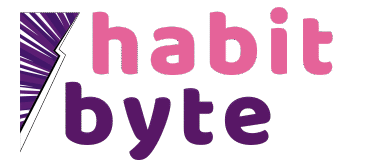How to Build a Simple Productivity System for Beginners and Students
If you’re overwhelmed by classes, assignments, or a new routine, you don’t need complicated systems, you need a few reliable habits that make starting and staying focused easier. This how-to guide gives you a simple, beginner-friendly structure you can use right away. You’ll learn small actions that beat procrastination, a realistic daily plan, and a few tools to keep you on track. By the end, you’ll have a lightweight system you can run on even your busiest days.
Step 1: Start Small with a 10-Minute Kickoff (plus the Two-Minute Rule)
When your brain says “not today,” shrink the start. Commit to just 10 minutes. If a task feels too big, use the two-minute rule: do anything that takes two minutes now, or complete a two-minute “starter” for a bigger task. Tiny starts bypass resistance and build momentum.
- Say it out loud: “I’m doing 10 minutes and I can stop.”
- Two-minute actions: open the doc, title the page, paste your outline, gather materials.
- Student examples: draft one thesis sentence, solve one practice problem, skim one abstract.
- Beginner examples: clear your desk, write a quick 1–3–5 list, set a timer and press start.
- Pro tip: pick a “start cue” (one song or white noise track) that you only use when you begin.
Step 2: Plan Your Day with the 1–3–5 Method and Energy Mapping
Keep your to-do list realistic with 1–3–5: one big task, three medium tasks, five small tasks. Then map tasks to your natural energy peaks so deep work happens when you’re sharpest. This prevents overcommitment and makes progress feel doable.
- Write your 1–3–5 on a sticky note, if it doesn’t fit, it doesn’t ship.
- Morning peak (9–11 AM?): schedule writing, problem sets, or concept-heavy studying.
- Afternoons: do admin, emails, readings, slide reviews, or group messages.
- Evenings: light review, prep for tomorrow, packing your bag, laying out materials.
- Example 1–3–5 (student): 1 big: draft lab report intro. 3 medium: solve 5 calculus problems, review slides, email professor. 5 small: print readings, rename files, update calendar, fill water bottle, tidy desk.
Step 3: Work in Focus Sprints (Pomodoro) That Actually Stick
Short, focused sprints beat marathon sessions. Try 25 minutes on, 5 minutes off; do 3–4 rounds, then take a longer break. If you need deeper flow, use 50/10. Treat breaks as reset time, not scroll time.
- Before you start: silence notifications, put your phone in another room or face down, and keep only what you need within reach.
- During a sprint: one context only, no new tabs, no switching tasks.
- Break ideas: stand up, drink water, stretch, or look out a window, avoid apps if possible.
- Student workflow: Sprint 1 outline, Sprint 2 research, Sprint 3 draft, Sprint 4 edit.
- Track it: tally rounds completed to visualize progress (e.g., ✔✔✔ for three sprints).
Step 4: Create a Distraction-Proof Zone
Most productivity plans fail because the environment fights them. Make focus the default with a few friction-reducing tweaks. Your goal: fewer decisions, fewer temptations, smoother starts.
- Clear your workspace down to the current subject, close extra tabs and apps.
- Use Do Not Disturb or Focus Modes; block distracting sites during sprints.
- Make “focus cues”: one playlist or white noise track you only use while working.
- Pre-stage materials: open the doc, load references, grab a pen and water before you begin.
- If at home: tell roommates your focus times or use a visible “in session” cue.
Step 5: Batch Similar Tasks and Use Theme Blocks
Context switching drains energy. Batch similar tasks so your brain stays in the same mode, and assign “theme blocks” during the week to pre-decide when categories of work happen.
- Batch ideas: reply to messages at 12:30 and 4:30, process all PDFs in one block, grade or review in one sitting.
- Student batching: read and annotate all articles together; complete problem set questions 1–5 in one block.
- Theme blocks: Deep Work, Admin, Review, Errands. Schedule them where they fit your energy.
- Benefit: fewer starts and stops, more consistent progress, less decision fatigue.
Step 6: Use Checkpoints to Track Progress and Adjust
Even the best productivity system benefits from reflection. Regularly reviewing your progress helps you see what’s working, adjust what isn’t, and stay motivated. Checkpoints also reinforce your sense of accomplishment, which fuels consistency and confidence.
- Daily review: at the end of each day, check off completed tasks, note unfinished items, and plan adjustments for tomorrow.
- Weekly reflection: review your 1–3–5 lists and energy mapping, what patterns emerged? Where did focus dip? Where did you excel?
- Celebrate small wins: even tiny progress builds momentum. Mark completed sprints, tasks, or theme blocks with a checkmark or visual tracker.
- Adjust system as needed: tweak your sprint lengths, batch times, or environment cues to better match your real-world energy and schedule.
- Mindset check: acknowledge challenges without judgment, your beliefs about your ability to improve shape your willingness to keep going.
Conclusion
Creating a simple productivity system doesn’t have to be overwhelming, especially for beginners and students. By starting small, using focused sprints like the Pomodoro technique, and prioritizing tasks with methods like 1-3-5 planning, you can build momentum and reduce procrastination. Over time, these consistent, manageable habits strengthen focus, make deadlines easier to handle, and help you feel more in control of your day. Remember, productivity is a skill developed gradually, and even small, steady steps can lead to meaningful progress and lasting results.
